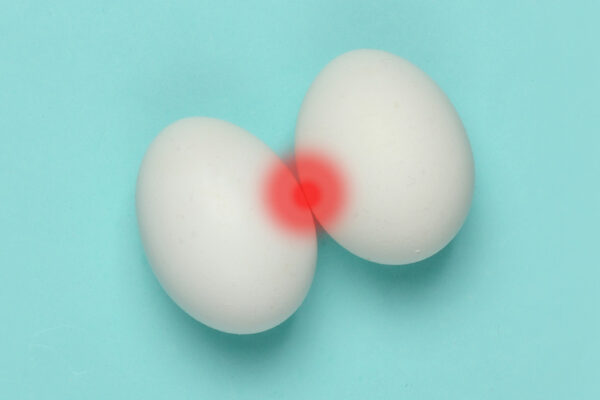
21 Agu Urinary Tract Infections (UTI) in women
Urinary Tract Infections (UTI) in women
By Island Hospital | Aug 21, 2019 1:27:41 AM
Women are more prone to contracting Urinary Tract Infections (UTI) compared to men. It is common that many women may experience more than one infection in their lifetime. This is due to the female anatomy. A female woman has a shorter urethra than a man does, which shortens the distance that bacteria must travel to reach the bladder, thus causing infections.
The vast majority of UTI are caused by the bacterium Escherichia coli (E. coli), usually found in the digestive system. This kind of bacteria causes infection of the bladder (cystitis).
Bacteria such as Chlamydia and Mycoplasma can also infect the urethra (urethritis) but not the bladder. This type of UTI occurs when the bacteria spread from the anus to the urethra. And because the female urethra is close to the vagina, sexually transmitted infections such as herpes, gonorrhoea, chlamydia and mycoplasma, can cause urethritis.
UTI may affect any part of your urinary system. Kidneys, ureters, bladder and urethra are all susceptible to infections. However, infections mostly affect the lower urinary tract, which is the urethra and bladder. Infections that affect the bladder can be painful and bothersome, but typically able to be treated with antibiotics. However, if the UTI spreads to the kidneys, serious consequences can occur.
There are many reasons that may cause a Urinary Tract Infections (UTI) in women. Amongst the causes are:
Changes in hormonal levels
Urinary tract infections (UTI) may occur when there are changes in a woman’s hormonal levels. Some are more likely to get an infection during certain times in their menstrual cycle, such as just before a period.
For post-menopausal women, a decline in Estrogen level after menopause causes changes in the urinary tract, thus making it more vulnerable to infection.
Pregnancy
Pregnant women are at increased risk for UTI from the 6thweek of pregnancy through to the 24thweek.
The changes in the urinary tract during pregnancy make it common for women to contract UTI.
As the uterus sits directly on top of the bladder, the added weight from the growth of the uterus may block the drainage of urine from the bladder, causing an infection. Sometimes germs can move from the bladder to the kidney, causing a kidney infection.
Urinary tract infections during pregnancy can cause an increase in blood pressure and sometimes, premature birth. Therefore, it is crucial to have the infections treated promptly.
Aging
In older women, the tissues of the urethra and bladder become thinner and drier with age, as well as after menopause or a hysterectomy. With lower energy levels and reduced cognitive abilities, personal hygiene may be decreased, causing an increase in bacteria. Seniors also get ailments that can cause urinary retention that can be linked to increased urinary tract infections.
There are several factors as to how a woman may come to contract Urinary Tract Infections (UTI). The following factors can increase the likelihood of developing UTI:
Sexual activity
Sexual intercourse may lead to a bladder infection called cystitis. This is because sexual intercourse introduces bacteria into a woman’s urinary tract. If sexual activity is more frequent, intense and with multiple or new partners, the chances of developing UTI will be higher.
Birth Control
Women who use diaphragms, spermicidal agents or spermicide-lubricated condoms as a birth control method may be at a higher risk to contract UTI because they can contribute to bacterial growth.
When you sense these signs and symptoms of UTI, you should seek treatment immediately to avoid complications.
Signs & Symptoms
- Feelings & Sensations:
- Pelvic pain especially in the middle part of the pelvis and around the area of the pubic bone
- Strong and persistent urges to urinate frequently, with small amounts of urine.
- Burning sensation when urinating.
- Colour:
- Urine colour appears cloudy, red, bright pink or even brownish.
- This is a sign of blood in the urine.
- Smell:
- Strong smelling urine
The good news is, when properly treated, UTI rarely lead to complications. Symptoms often clear up within a few days of treatment with a course of antibiotics. For uncomplicated cases, you may be recommended a shorter course of treatment, such as taking an antibiotic for one to three days. You may also be prescribed pain medications (analgesic) to numb your bladder and urethra to relieve the burning sensation while urinating.
There are several tests and procedures that can be done to diagnose UTI.
Urine sample
Getting a urine sample is the most common test to diagnose UTI
Urine samples are used to look for white blood cells, red blood cells and presence of bacteria in our urine.
Lab tests
Lab analysis followed by a urine culture is a test that detects and identifies bacteria and yeast in the urine, which may be causing a UTI. This test also tells your doctor which medications will be most effective.
Creating images of your urinary tract
As frequent infections may be caused by an abnormality in your urinary tract, ultrasounds, MRI or CT scans may be necessary to create images of your urinary tract. A contrast dye may also be used to highlight structures to your urinary tract to find out more about the abnormality.
Cystoscopy
Sometimes it may also be necessary to use a scope to help find problems with the urinary tract. Your doctor inserts a long, thin tube with a lens (cystoscope) in your urethra and passes it through your bladder, to see inside your urethra and bladder to find out if there are early signs of cancer, infection, narrowing, blockage, or bleeding.
Not treating UTI immediately, and allowing symptoms to prolong, may lead to the below complications:
- Recurrent infections
- Kidney damage – Permanent damage from an acute or chronic kidney infection (pyelonephritis) due to untreated UTI.
- Higher risk of pregnant women delivering premature infants.
- Sepsis – May be life-threatening especially if the infection works its way up the urinary tract to the kidneys.
Therefore, it is always wise to seek treatment immediately when you sense that you have the signs and symptoms of UTI
Drink lots of fluids
Drinking lots of fluids, especially water, will help dilute your urine. When urine is diluted you will urinate more frequently, thus allowing bacteria to be flushed from your urinary tract. This prevents any infection from beginning.
Wipe from front to back
When you wipe after going to the bathroom, wipe from the front to the back to prevent bacteria in the anal region from spreading to the vagina and urethra.
Urinate after sexual intercourse
This is to flush out bacteria before it can travel to the bladder.
Usage of feminine products
It is best to avoid potentially irritating feminine products, deodorant sprays, douches or powders, in the genital area. These products may irritate the urethra.
Birth control
Women who use diaphragms, spermicidal agents or spermicide-lubricated condoms as a birth control method may be at a higher risk to contract UTI because they can contribute to bacterial growth. Therefore, it is advisable to seek alternative birth control methods if you have recurring urinary tract infections.







